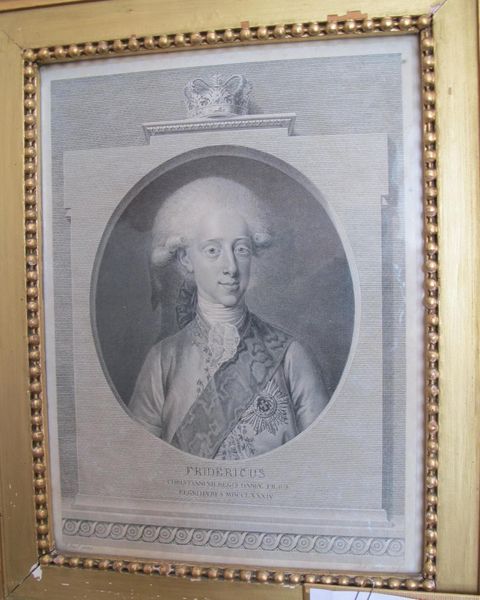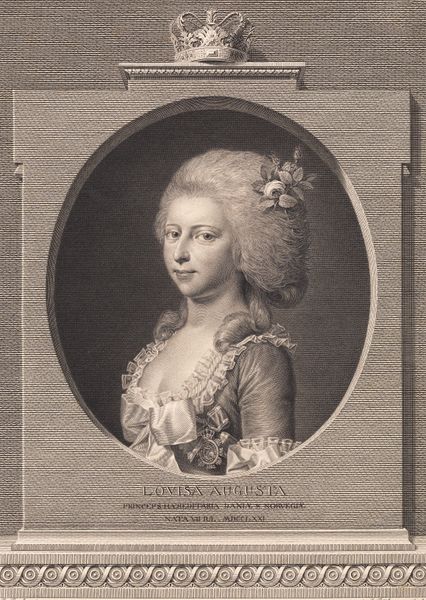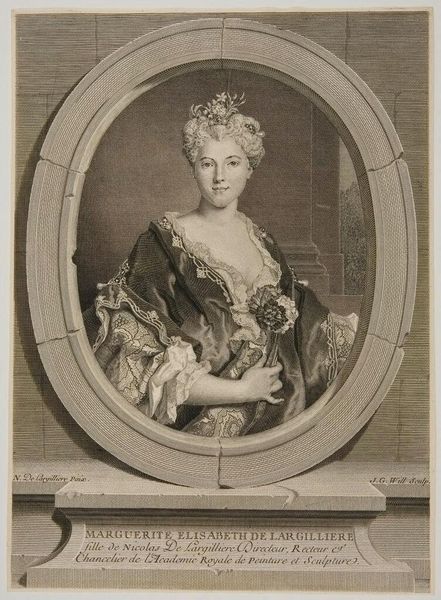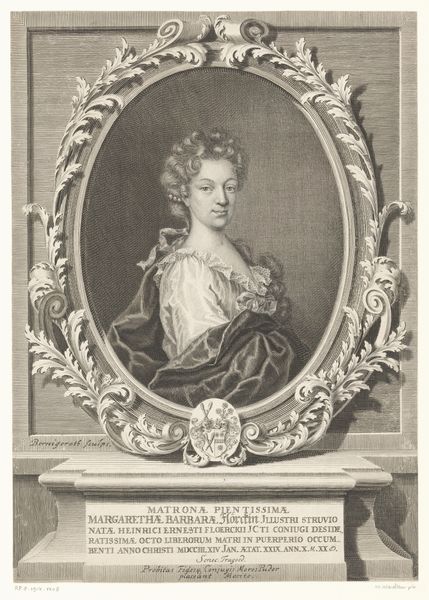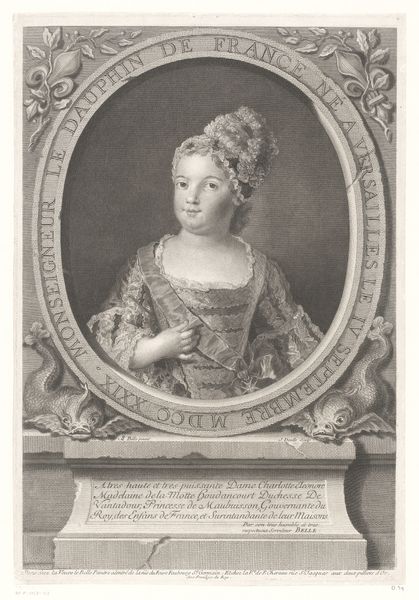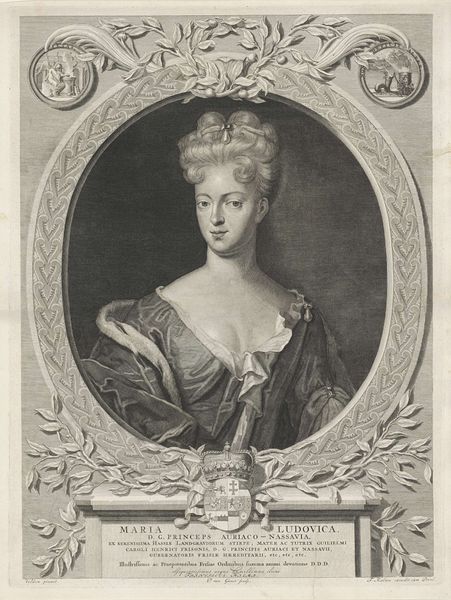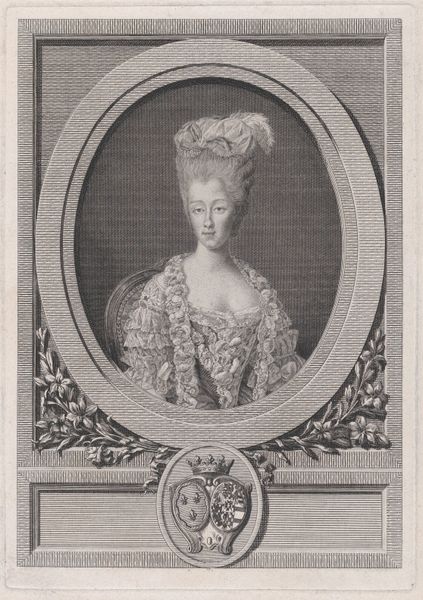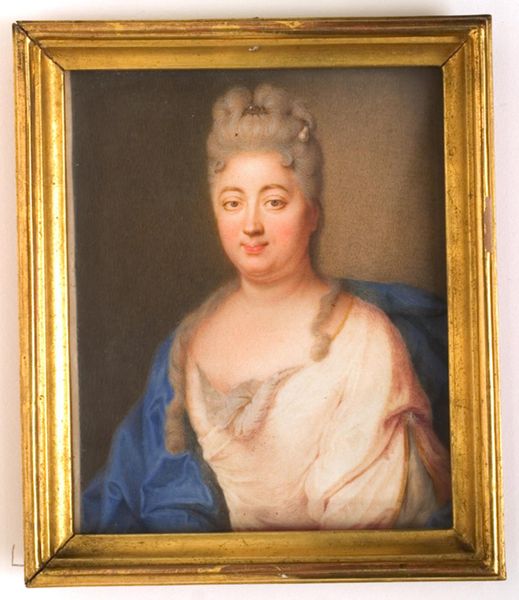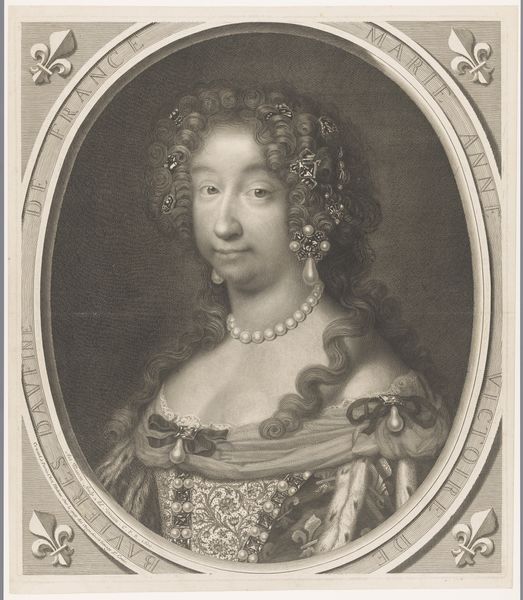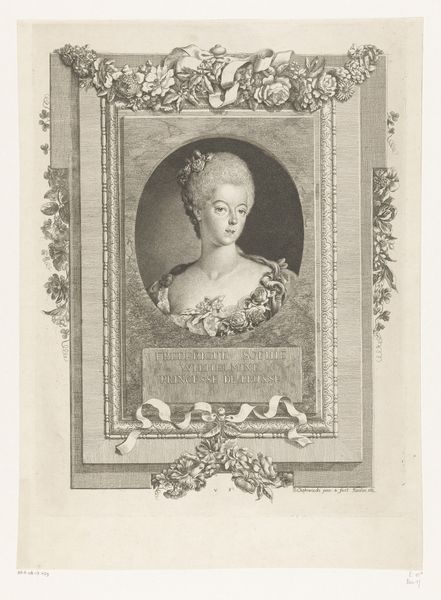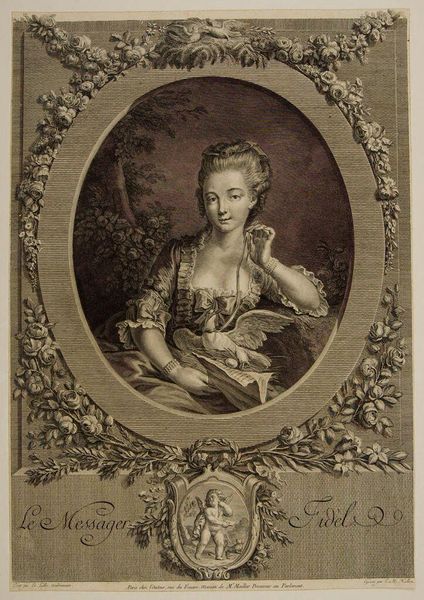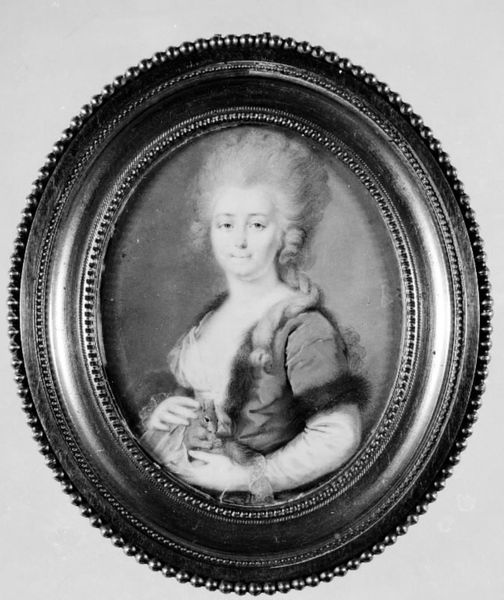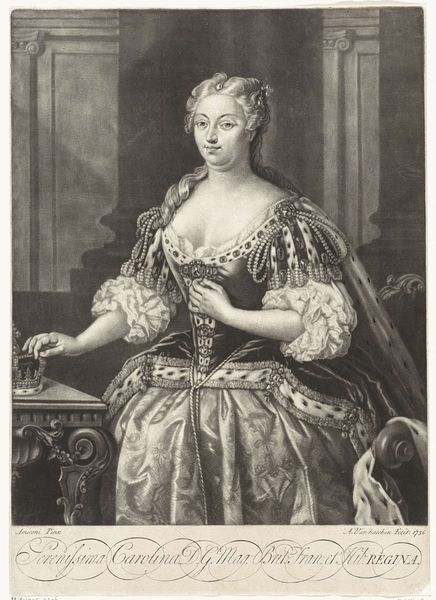
print, engraving
#
portrait
#
neoclacissism
# print
#
history-painting
#
engraving
Dimensions: 315 mm (height) x 235 mm (width) (None)
Curator: This is a print of Louise Augusta, engraved by J.F. Clemens in 1785. You can find it here at the SMK, the Statens Museum for Kunst. Editor: There's an ethereal quality about this engraving; the texture and delicate lines lend it a certain air of classical idealism. What stands out to you formally? Curator: Well, consider the use of line itself. Clemens has rendered the textures, the hair, and the fabric of her gown with remarkable precision. The fineness of the engraving allows for subtle gradations of tone, which adds a sense of depth to what is, essentially, a two-dimensional surface. Semiotically, one might consider how the artist's style encodes particular messages about beauty and status through carefully managed visual details. Editor: Indeed. The depiction of Louise Augusta, Princess of Denmark and Norway, serves as an intriguing intersection of art and politics. It's not just a likeness, it's a carefully crafted statement about power, dynasty and even perhaps, public image in late 18th-century Denmark. Did Clemens create this for public distribution or for the court? Curator: Considering the historical context and the medium, probably for a fairly widespread distribution. Engravings, especially portraits of nobility, functioned as both commemorative items and instruments of statecraft. Note how Clemens placed her within a stylized frame beneath a crown. I would suggest, that in itself is quite a statement about heritage. Editor: The formal elements absolutely play into the political ones. And the subject being Princess Louise, who was the daughter of Queen Caroline Matilda and allegedly Johann Friedrich Struensee, makes her placement even more significant. To have her portrait circulate helped reinforce royal lineage amidst possible controversies. Curator: From my viewpoint, these layered meanings are articulated so subtly using neoclassicist tools of clarity, order and restraint. It doesn't overtly glorify. Clemens makes a controlled aesthetic choice that underscores this image’s role as both artwork and propaganda. Editor: Yes. Considering how the piece operates within those various levels helps us appreciate the true sophistication involved. Thank you for breaking down both the historical and artistic structure for us! Curator: My pleasure. I appreciate being able to focus on these points that can be lost if not studied in depth.
Comments
No comments
Be the first to comment and join the conversation on the ultimate creative platform.
